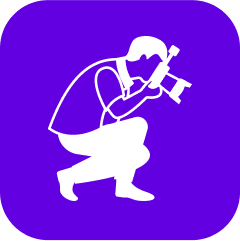Artistic Lens Institute operates on a hybrid business model that combines traditional educational frameworks with modern digital innovation. Our goal is to create a sustainable and scalable operation that delivers high-quality photography education to a global audience. Below are the key components of our business model:
-
Revenue Streams:
- Tuition Fees: The primary source of revenue comes from the tuition fees for our various photography courses. We offer tiered pricing based on the course level (beginner, intermediate, advanced) and the mode of delivery (in-person, online).
- Workshops and Seminars: Additional revenue is generated through specialized workshops and seminars, which focus on niche areas of photography such as fashion, wildlife, or wedding photography. These are offered as standalone events or as part of a larger course package.
- Merchandising and Equipment Sales: We partner with leading photography equipment brands to offer students discounted rates on cameras, lenses, and other accessories. A portion of sales made through our referral links or in-house store contributes to our revenue.
- Membership Programs: We offer a subscription-based membership program that provides students with access to exclusive content, advanced tutorials, and networking events. Members also receive discounts on courses and merchandise.
- Corporate Partnerships: We collaborate with businesses in need of professional photography services, offering them access to our pool of talented students and graduates. These partnerships provide a dual benefit: real-world experience for our students and additional revenue for the institute.
-
Cost Structure:
- Fixed Costs: These include expenses related to maintaining our physical campus, paying salaries to our faculty and staff, and investing in state-of-the-art equipment and technology.
- Variable Costs: Costs associated with marketing, online platform maintenance, and course development fall under this category. These costs fluctuate based on the number of courses offered, student enrollment numbers, and the level of online engagement.
- Investment in Technology: A significant portion of our budget is allocated to developing and maintaining our online learning platform. This includes expenses for web hosting, cybersecurity, and the creation of interactive learning modules.
-
Marketing and Sales Strategy:
- Digital Marketing: We leverage social media, search engine optimization (SEO), and pay-per-click (PPC) advertising to reach a broader audience. Our marketing strategy is data-driven, utilizing analytics to optimize campaigns and target specific demographics.
- Affiliate Marketing: Partnerships with photography influencers, bloggers, and online communities help us reach potential students. We offer commission-based incentives for referrals, which drives organic traffic to our site.
- Content Marketing: Through blogs, video tutorials, and free webinars, we establish our authority in the photography education space. This content not only attracts prospective students but also nurtures relationships with existing ones, encouraging repeat enrollments.
-
Customer Segments:
- Aspiring Photographers: Individuals new to photography who are seeking comprehensive training to start their journey.
- Hobbyists: Photography enthusiasts who want to improve their skills as a leisure activity.
- Professional Photographers: Experienced photographers looking to refine their craft or learn new techniques.
- Corporations and Businesses: Companies in need of professional photography services, as well as employees looking to develop photography skills for professional use.
-
Value Proposition:
- Quality Education: Our curriculum is designed by industry experts and covers a wide range of photography styles and techniques.
- Flexibility: With both in-person and online learning options, we cater to the diverse needs of our students.
- Career Support: We offer ongoing career services, including job placement assistance, portfolio development, and networking opportunities.
